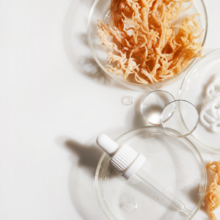Break the Sugar Cycle
- Published: Wednesday, October 17th 2018
- in Nutrition

Back in the 90s, when word on the street was to avoid fat at all costs, food producers started pumping out fat free products that replaced fat with sugar–a lot of sugar. And it’s not surprising that our waistlines also started to expand, along with diabetes rates.
Now, most doctors and nutritionists agree that sugar is a major point of concern but it can be hard to avoid this addictive sweetener. It lurks in our tomato sauces, our drinks and our breakfast bars and yogurt. In fact, there doesn’t seem to be a processed food item without sugar in it. Here are a few tips on how to break the sugar cycle and avoid eating too many empty calories.
Natural vs. Added
When we’re talking about sugar, it’s important to note that we mean added sugar, not naturally found sugar. Fruit is sweet because it contains natural sugars but it also contains water, fiber and micronutrients. Added sugars like regular table sugar (sucrose) or high-fructose corn syrup provide no additional nutritional value. In addition, they are packed with calories.
Stop the Daily Overdose
The recommended daily amount of sugar is 25 grams per day and unfortunately, the average American consumes about 77 grams of sugar a day[1], which is more than triple the recommended amount. Reduce your sugar intake by limiting things like sugary drinks, skipping desserts and looking at the sugar content on nutrition labels.
Making more meals at home will also help you reduce your sugar intake. And prepared food often has a lot of sugar to boost shelf life and flavor. By embracing fresh produce and getting active in the kitchen, you will find that food tastes better fresher and better– and you will feel full and satisfied with less.
Try to find a day when you can meal prep a lot of food and then utilize your freezer. A batch of frozen marinara can save you from a jar of store bought sauce and from a lot of hidden sugar.
Withdrawal is Real
Andrew Weil, M.D. nailed it in his classic guide to addictive substances, “From Chocolate to Morphine.” Sugar is addictive. And just like withdrawing from other addictive substances like cigarettes and caffeine, you might experience symptoms like fatigue, irritation and headaches when you start to reduce your sugar intake.[2] Try going cold turkey and cutting out all sugar (including the natural sugars found in fruits and dairy) for three days. After that, your palate will be recalibrated and you can start adding back in naturally occurring sugars like honey or maple syrup and then eventually ease your way back into things. While you are doing this sugar cleanse, counterbalance the withdrawal by adding extra spice to your food and by drinking cold beverages (without sugar, of course).
[1] Healthline, “Daily Intake of Sugar — How Much Sugar Should You Eat Per Day?” Kris Gunnars, June 2018
[2] Health, “How to Ease Withdrawal Symptoms When You Quit Sugar, According to a Nutritionist,” Anthea Levi, October 2017



